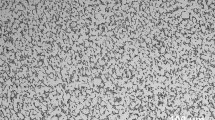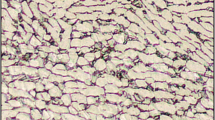Abstract
Full range constant strain rate tests are required for accurately characterizing initial yield point, strength differential effect and direct identification of constitutive laws describing the plastic behavior of materials. These tests require the use of a closed-loop control in order to achieve the constant strain rate, however this feature is not available in many laboratories. A method for full range constant strain rate with testing machines that can be configured for user-defined displacements of the cross head prior to testing is presented here. Tests performed at a constant die speed include a variable strain rate response for the specimen involved. Significant deformation rate variation occurs between the elastic and plastic range with consequences for initial yield point identification. To overcome this drawback, appropriate user-defined displacements can be computed and applied, allowing for both tensile and compression tests to be performed at a constant strain rate. The method is validated using a compression test of Ti6Al4V alloy at room temperature, as well as a 3D digital image correlation (DIC) system exhibiting a constant strain rate value equal to 10−3 s−1, for both elastic and plastic ranges. A non-negligible inhomogeneous strain field was measured on the surface of the compression specimen using DIC and was corroborated by numerical modeling. Results identified the source of the non-homogeneous strain field, thereby proposing a quantitative indicator of plastic anisotropy. The initial yield stress and strain hardening rates of the alloy at several temperatures were obtained with both testing method, conventional constant cross-head speed, and the constant strain rate; these were then used to determine the influence of the small strain rate variations on the mechanical response of Ti6Al4V alloy.
















Similar content being viewed by others
References
Simha CHM, Williams BW (2016) Modeling failure of Ti-6Al-4V using damage mechanics incorporating effects of anisotropy, rate and temperature on strength. Int J Fract 198(1-2):101–115. https://doi.org/10.1007/s10704-016-0099-5
Naka T, Uemori T, Hino R, Kohzu M, Higashi K, Yoshida F (2008) Effects of strain rate, temperature and sheet thickness on yield locus of AZ31 magnesium alloy sheet. J Mater Process Tech 201(1-3):395–400. https://doi.org/10.1016/j.jmatprotec.2007.11.189
Kabirian F, Khan AS (2015) Anisotropic yield criteria in σ–τ stress space for materials with yield asymmetry. Int J Solids Struct 67–68:116–126. https://doi.org/10.1016/j.ijsolstr.2015.04.006
Galán-López J, Verleysen P (2018) Simulation of the plastic response of Ti–6Al–4V thin sheet under different loading conditions using the viscoplastic self-consistent model. Mater Sci Eng A 712:1–11. https://doi.org/10.1016/j.msea.2017.11.070
Tuninetti V, Gilles G, Milis O, Lecarme L, Habraken AM (2012) Compression test for plastic anisotropy characterization using optical full-field displacement measurement technique. Steel Res Int SE: Metal Forming 2012:1239–1242
Zerilli FJ, Armstrong RW (1987) Dislocation-mechanics-based constitutive relations for material dynamics calculations. J Appl Phys 61:1816–1825. https://doi.org/10.1063/1.338024
Hoff NF (1954) Approximate analysis of structures in the presence of moderately large creep deformations. Q Appl Math 12:49–55. https://doi.org/10.1090/qam/61004
Johnson GJ, Cook WH (1983) A constitutive model and data for metals subjected to large strains, high strain rates and high temperatures. Proceedings of the seventh international symposium on ballistics 541–547
Dorogoy A, Rittel D (2009) Determination of the Johnson-Cook material parameters using the SCS specimen. Exp Mech 49:881–885. https://doi.org/10.1007/s11340-008-9201-x
Peirs J, Verleysen P, Degrieck J (2012) Novel technique for static and dynamic shear testing of Ti6Al4V sheet. Exp Mech 52(7):729–741. https://doi.org/10.1007/s11340-011-9541-9
Wang Z, Beese AM (2019) Stress state-dependent mechanics of additively manufactured 304L stainless steel: part 2 – characterization and modeling of macroscopic plasticity behavior. Mater Sci Eng A 743:824–831. https://doi.org/10.1016/j.msea.2018.11.091
Zhang C, Chu X, Guines D, Leotoing L, Ding J, Zhao G (2015) Dedicated linear – voce model and its application in investigating temperature and strain rate effects on sheet formability of aluminum alloys. Mater Des 67:522–530. https://doi.org/10.1016/j.matdes.2014.10.074
Mondal C, Singh AK, Mukhopadhyay AK, Chattopadhyay K (2013) Tensile flow and work hardening behavior of hot cross-rolled AA7010 aluminum alloy sheets. Mater Sci Eng A 577:87–100. https://doi.org/10.1016/j.msea.2013.03.079
Christopher J, Choudhary BK, Isaac Samuel E, Srinivasan VS, Mathew MD (2011) Tensile flow and work hardening behaviour of 9Cr–1Mo ferritic steel in the frame work of voce relationship. Mater Sci Eng A 528:6589–6595. https://doi.org/10.1016/j.msea.2011.05.026
Kim KS, Yu JS, Won J, Lee C, Kim SJ, Lee S, Lee KA (2013) Manufacturing and compressive deformation behavior of high-strength aluminum coating material fabricated by kinetic spray process. Metall Mater Trans A 44:4876–4879
Morelle XP, Chevalier J, Bailly C, Pardoen T, Lani F (2017) Mechanical characterization and modeling of the deformation and failure of the highly crosslinked RTM6 epoxy resin. Mech Time-Depend Mater 21(3):419–454. https://doi.org/10.1007/s11043-016-9336-6
He J, Chen F, Wang B, Zhu LB (2018) A modified Johnson-Cook model for 10%Cr steel at elevated temperatures and a wide range of strain rates. Mater Sci Eng A 715:1–9. https://doi.org/10.1016/j.msea.2017.10.037
Wang LX, Fang G, Leeflang MA, Duszczyk J, Zhou J (2015) Constitutive behavior and microstructure evolution of the as-extruded AE21 magnesium alloy during hot compression testing. J Alloys Compd 622:121–129. https://doi.org/10.1016/j.jallcom.2014.10.006
Chu Y, Li J, Zhao F, Tang B, Kou H (2018) Characterization of the elevated temperature compressive deformation behavior of high Nb containing TiAl alloys with two microstructures. Mater Sci Eng A 725:466–478. https://doi.org/10.1016/j.msea.2018.04.055
Iturbe A, Giraud E, Hormaetxe E, Garay A, Germain G, Ostolaza K, Arrazola PJ (2017) Mechanical characterization and modelling of Inconel 718 material behavior for machining process assessment. Mater Sci Eng A 682:441–453. https://doi.org/10.1016/j.msea.2016.11.054
López JG, Peirs J, Verleysen P, Degrieck J (2011) Effect of small temperature variations on the tensile behaviour of Ti-6Al-4V. Procedia Eng 10:2330–2335. https://doi.org/10.1016/j.proeng.2011.04.384
Zhang S, Liang Y, Xia Q, Ou M (2019) Study on tensile deformation behavior of TC21 titanium alloy. J Mater Eng Perform 28(3):1581–1590. https://doi.org/10.1007/s11665-019-03901-x
Hartley CS, Jenkins DA (1980) Tensile testing at constant true plastic strain rate. JOM 32(7):23–28. https://doi.org/10.1007/BF03354560
Luton MJ, Immarigeon JA, Jonas JJ (1974) Constant true strain rate apparatus for use with Instron testing machines. J Phys E: Scientific Instruments 7(10):862. https://doi.org/10.1007/BF03354560
G'sell C, Jonas J (1979) Determination of the plastic behaviour of solid polymers at constant true strain rate. J Mater Sci 14:583–591
Bacchelli F (2007) A Rheotens-based setup for the constant strain rate uniaxial extension of uncured elastomers. Rheol Acta 46(9):1223–1233. https://doi.org/10.1007/s00397-007-0215-6
Holbrook J, Swearengen J, Rohde R (1982) Specimen-test machine coupling and its implications for plastic deformation models, in Mechanical Testing for Deformation Model Development, ASTM International:80–101. https://doi.org/10.1520/STP28882S
Rodriguez OL, Allison PG, Whittington WR, El Kadiri H, Rivera OG, Barkey ME (2018) Strain rate effect on the tension and compression stress-state asymmetry for electron beam additive manufactured Ti6Al4V. Mater Sci Eng A 713:125–133. https://doi.org/10.1016/j.msea.2017.12.062
Kopec M, Wang K, Politis DJ, Wang Y, Wang L, Lin J (2018) Formability and microstructure evolution mechanisms of Ti6Al4V alloy during a novel hot stamping process. Mater Sci Eng A 719:72–81. https://doi.org/10.1016/j.msea.2018.02.038
Siebert T, Becker T, Splitthof K, Neumann I, Krupka R (2007) High-speed digital image correlation: error estimations and applications. Opt Eng 46:051004. https://doi.org/10.1117/1.2741217
Palanca M, Tozzi G, Cristofolini L (2016) The use of digital image correlation in the biomechanical area: a review. Int Biomech 3:1–21. https://doi.org/10.1080/23335432.2015.1117395
Lecompte D, Smits A, Bossuyt S, Sol H, Vantomme G, Van Hemelrijck D, Habraken AM (2006) Quality assessment of speckle patterns for digital image correlation. Opt Lasers Eng 44:1132–1145. https://doi.org/10.1016/j.optlaseng.2005.10.004
de Montleau P, Habraken AM, Duchêne L (2008) A new finite element integration scheme. Application to a simple shear test of anisotropic material. Int J Numer Meth Eng 73:1395–1412
Habraken AM, Cescotto S (1990) An automatic remeshing technique for finite element simulation of forging processes. Int J Numer Meth Eng 30:1503–1525
Habraken AM, Charles JF, Wegria J, Cescotto S (1998) Dynamic recrystallization during zinc rolling. Int J Form Process 1:1–20
Habraken AM, Duchêne L (2004) Anisotropic elasto-plastic finite element analysis using a stress–strain interpolation method based on a polycrystalline model. Int J Plasticity 20:1525–1560
Charlier R, Habraken AM (1990) Numerical modellisation of contact with friction phenomena by the finite element method. Comput Geotech 9:59–72. https://doi.org/10.1016/0266-352X(90)90029-U
Charlier R, Cescotto S (1993) Frictional contact finite elements based on mixed variational principles. Int J Numer Meth Eng 36(10):1681–1701. https://doi.org/10.1002/nme.1620361005
Zhu YY, Cescotto S (1996) Unified and mixed formulation of the 8-node hexahedral elements by assumed strain method. Comp Meth Appl Mech Eng 129:177–209
Duchêne L, El Houdaigui F, Habraken AM (2007) Length changes and texture prediction during free end torsion test of copper bars with FEM and remeshing techniques. Int J Plasticity 23:1417–1438
Tuninetti V, Gilles G, Péron-Lührs V, Habraken AM (2012) Compression test for metal characterization using digital image correlation and inverse modeling. Procedia IUTAM 4:206–214. https://doi.org/10.1016/j.piutam.2012.05.022
Cazacu O, Plunkett B, Barlat F (2006) Orthotropic yield criterion for hexagonal closed packed metals. Int J Plasticity 22:1171–1194. https://doi.org/10.1016/j.ijplas.2005.06.001
Tuninetti V, Flores P, Pincheira G, Gilles G, Duchêne L, Habraken AM (2019) Impact of distortional hardening and the strength differential effect on the prediction of large deformation behavior of the Ti6Al4V alloy. Meccanica 54(11):1823–1840. https://doi.org/10.1007/s11012-019-01051-x
Gilles G, Hammami W, Libertiaux V, Cazacu O, Yoon JH, Kuwabara T, Habraken AM, Duchêne L (2011) Experimental characterization and elasto-plastic modeling of the quasi-static mechanical response of TA–6V at room temperature. Int J Solids Struct 48:1277–1289. https://doi.org/10.1016/j.ijsolstr.2011.01.011
Gilles G (2015) Experimental study and modeling of the quasi-static mechanical behavior of Ti6Al4V at room temperature. PhD Dissertation, University of Liège
Li P, Siviour CR, Petrinic N (2009) The effect of strain rate, specimen geometry and lubrication on responses of Aluminium AA2024 in uniaxial compression experiments. Exp Mech 49(4):587–593. https://doi.org/10.1007/s11340-008-9129-1
Abu-Farha FK, Khraisheh MKJ (2007) On the high temperature testing of superplastic materials. Materi Eng and perform 16:142–149. https://doi.org/10.1007/s11665-007-9024-4
Zherebtsov S, Salishchev G, Galeyev R (2001) Dynamic recrystallization of titanium and Ti-6Al-4V alloy. First joint international conference “recrystallization and grain growth”:961-966
Acknowledgements
The authors thank the Chilean Scientific Research Fund CONICYT FONDECYT 11170002, the Universidad de La Frontera Internal Research Fund DIUFRO (Project DI17-0070), the Marco multiannual convention FRO1855 and the cooperation agreement WBI/AGCID SUB2019/419031 (DIE19-0005). As research director of FRS-FNRS, A.M. Habraken thanks the Belgian Scientific Research Fund FNRS for financial support. The authors would also like to thank O. Milis for his technical support.
Funding
This study was funded by CONICYT (FONDECYT 11170002), DIUFRO (DI17–0070), WBI/AGCID (SUB2019/419031), Marco multiannual convention FRO1855 and the Belgian Scientific Research Fund FNRS.
Author information
Authors and Affiliations
Corresponding author
Ethics declarations
Conflict of interest
The authors declare that they have no conflict of interest.
Additional information
Publisher’s note
Springer Nature remains neutral with regard to jurisdictional claims in published maps and institutional affiliations.
Rights and permissions
About this article
Cite this article
Tuninetti, V., Flores, P., Valenzuela, M. et al. Experimental characterization of the compressive mechanical behaviour of Ti6Al4V alloy at constant strain rates over the full elastoplastic range. Int J Mater Form 13, 709–724 (2020). https://doi.org/10.1007/s12289-020-01543-2
Received:
Accepted:
Published:
Issue Date:
DOI: https://doi.org/10.1007/s12289-020-01543-2




